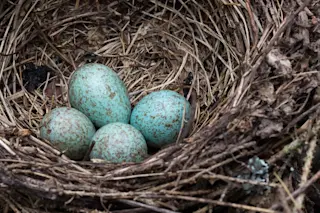From baby blue to black-speckled beige, bird eggs are as varied as the species that lay them. Why bird eggs come in so many colors is still something of a mystery, but new research identifies a reason for a common trend among birds, especially those up north: their dark-colored eggs.
Previous research on tropical birds has shown that darker hues help guard against predation — they are harder for hungry neighbors to see. Deep pigments in eggshells also contain light-activated molecules that protect against infections. Now, a paper published in Nature Ecology and Evolution suggests that birds up north lay dark eggs for another reason: The color helps keep the growing chick warm.
Read more: Why do some birds lay blue eggs?
The research team found that eggs are browner for birds nesting in cold climates with little sunlight. The need for this adaptation makes sense. Darker colors absorb and ...














